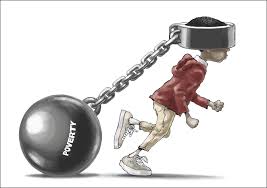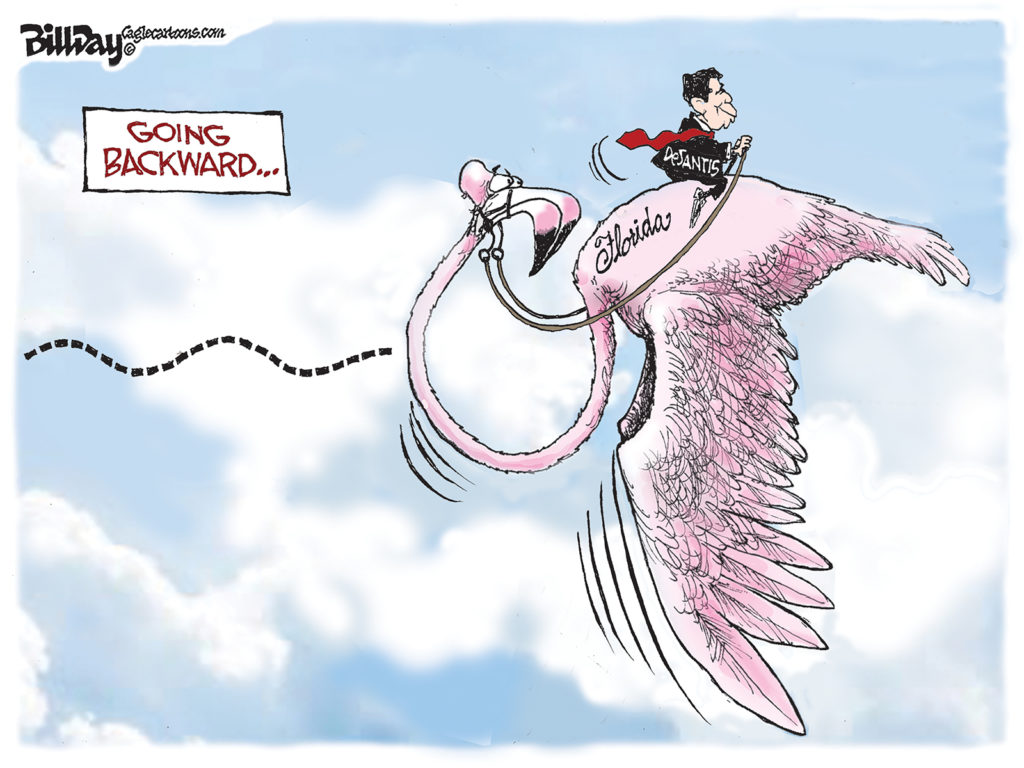Our media air waves and political squares are dominated by talk about all manner of challenging issues, but they are largely silent on the single issue that ultimately has the power to kill our region – the economic disparities that are devastating drags on our community.
It’s the elephant in the room but we seem largely focused on why there are peanuts on the floor.
Meanwhile, the gaping gaps in incomes, unemployment rates, and opportunity between whites and people of color pull down the economic vitality of this region, undermine its Gross Domestic Product, and trap too many people without the means for a reasonable standard of living.
Before we continue, let us emphasize again that we are talking about the MSA, not just about Memphis. That’s because the problems that are regularly topics of concern here are also found throughout the region.
A Tale of Two Regions
It’s one of the primary differences between our region and others. When we drive out of the core county in Atlanta, Indianapolis, Nashville, or Louisville, we drive into counties with dramatically higher median household incomes and higher educational attainment. But here, when we drive outside Shelby County and into the region, poverty remains a nagging problem, median household incomes do not dramatically increase, and educational attainment goes down.
For example, snuggled up south of Nashville-Davidson County is the “bedroom county of preference,” Williamson County, where median household income is $90,000, the median value of owner-occupied houses is $335,000, 53% of people older than 25 have bachelor’s degrees or higher, and the poverty rate is 5.7%. Those indicators are dramatically better than Nashville-Davidson County where median household income is $47,335, median value of houses is $167,500, 36% of people older than 25 has bachelor’s degrees are higher, and poverty rate is 18.5%.
Snuggled up south of Shelby County is our “bedroom county of preference,” DeSoto County, where median household income is $58,505, the median value of owner-occupied houses is $152,600 , 21.6% have bachelor’s degrees or higher, and the poverty rate is 10%.
Stating the obvious: DeSoto County is no Williamson County.
Its indicators are only mildly better than Shelby County, where the median household income is $46,250, the median house value is $132,700, 29% of people older than 25 have bachelor’s degrees or higher, and the poverty rate is 21%.
Breaking The Disparities
It’s those unexciting Memphis MSA numbers that result in a smaller, less robust consumer market here. Meanwhile, in Nashville, restaurants, concerts, and sports events are fueled by a region much more prosperous than ours and whose residents expand the Davidson County economy with their spending.
But all that is just context for the point of this post, which is about how economic disparities are baked into our MSA and how we pay a heavy price as a region for our inability to break the link between people of color and inequality. If nothing changes, things will get much worse, according to projections prepared by Woods & Poole Economics Inc. for PolicyLink.
From 1980-2010, the number of people of color went from 42 percent to 53.8 percent of the total population. By 2040, 66.1 percent of the population will be people of color.
From 2000-2010, the Latino population had the highest growth rate at 130.3 percent and the White population had the lowest at -2.7 percent. African American population grew by 14.6%, Asian population grew by 53.3% and mixed/other grew by 49.4%.
The Imperative: Break The Link Between Color And Disparities
Here’s the percentage of the population projected to be people of color in 2040 (2010 percentages are in parentheses)
66.1% – Memphis MSA (53.8%)
79.4% – Shelby County (61.3%)
46.8% – Desoto County (29.6%)
68.6% – Crittenden County (54.8%)
26.4% – Tipton County (23.3%)
80.8% – Tunica County (76.9%)
28.4% – Fayette County (31.8%)
The Memphis region has always been on the leading edge of the movement toward an American defined by its diversity. While the majority of United States population will be people of color in 2040, our MSA will be leading the pack as a majority minority region. By 2010, the Memphis MSA was already characterized by its diversity with 53.8% of its population being people of color, and that demographic wave is projected to increase to 66.1% by 2040.
By 1980, 42% of the population of the Memphis MSA was people of color; 1990, it was 42.8%; 2000, it was 48.1%; 2010, it was 53.8%. It is projected to be 57.8% by 2020 and 62.1% by 2030.
People of Color Percentages
While two out of three people in the Memphis MSA will be people of color, there are other MSAs where the percentage is even greater, but they are largely in metros where growing Latino population is driving their diversity. In fact, for cities where African Americans are the dominant indicators of diversity, the Memphis MSA may likely have the largest percentage.
Projections for 2040 for selected MSAs for percentage of population that will be people of color:
79.5% – Los Angeles MSA
76.9% – Miami MSA
75.2% – Houston MSA
69.6% – San Antonio MSA
66.4% – Orlando MSA
66.1% – Memphis MSA
59.6% – Atlanta MSA
57.7% – Dallas MSA
53.6% – Phoenix MSA
53.0% – New Orleans MSA
45.8% – Birmingham MSA
42.6% – Detroit MSA
39.3% – Nashville MSA
23.5% – Chattanooga MSA
19.0% – Knoxville MSA
The Battle Lines Are Drawn
Back to our main point, if the Memphis region is unable to change the economic disparities at the heart of our economy, our economic prospects will be crippled at the exact moment that the international economy will become ever more complex and challenge our ability to compete.
At the time of the legendary Memphis Jobs Conference in 1979, the fact that the income for a white Memphian was twice that of a black Memphians was acknowledged as a discrepancy that limited our potential for the future and demanded concerted attention. That future is today, and the prediction has been made manifest.
In 2012, the median income for workers of color remained $7 less than the median wage for white workers – $22 to $15. Today, 72% of white workers earn at least $15 an hour but only 46% of people of color. Those are the same levels as 1980, which indicates two things: 1) the structural erosion of middle class incomes and 2) the faster pace of low-wage job creation. In fact, from 1990 to 2012, the number of low-wage jobs in our MSA increased 39.5%, compared to 9.5% for middle wage jobs, and 18.9% for high-income jobs.
In other words, the ultimate challenge for the Memphis SMA is to disrupt trajectories that appear to be relatively locked into place at this time. More than anything, the trend lines for the past 35 years indicate that at best we have been running in place and at worst, we are losing ground to our peers.
According to calculations by Zach Hoyt, the Memphis MSA Gross Domestic Product per capita in 2012 was $49,324; however, in 2005, it was $51,894. Comparing the per capita GDP of Memphis MSA with Birmingham MSA, Little Rock MSA, Louisville MSA, Nashville MSA, New Orleans MSA, Oklahoma City MSA, and St. Louis MSA, Memphis’s GDP was ranked #2 in 2001, #3 in 2005, #6 in 2010, and it is now last – #8.
That decline in per capita GDP is one of the most telling indicators of the economic challenges facing our region and reflects our losing battle to close our economic disparities. If that disparity could be closed, the GDP would be $20 billion higher.
****
Join us at the Smart City Memphis Facebook page for daily articles, reports, and commentaries relevant to Memphis and the conversations that begin here.





The first sentence of this piece should be rephrased to state that it is the vast economic disparity rooted in widespread abject poverty that has already killed Memphis and the MSA. The links between income disparity and race simply won’t change. It will only worsen.
Without better schools, education and motivation the jobs will not materialize. So many people here simply do not work and live off the system. If they want work most don’t have the skills or the desire to work. The vast majority who do actually work are stuck very low paying jobs that lead to nowhere. Not just in Memphis, but in suburbs too.
Anonymous and anonymous: do you enjoy talking to yourself?
I don’t see anything here about how to change the income disparity. What are your solutions?
We have posted the recommendations of national experts and local experts and researchers several times over the past 18 months.
George: Here are a few:
http://www.smartcitymemphis.com/2016/08/center-for-neighborhood-technology-recommendations-to-reduce-memphis-poverty/
http://www.smartcitymemphis.com/2015/09/16227/
http://www.smartcitymemphis.com/2016/09/blueprint-for-prosperity-priorities/
http://www.smartcitymemphis.com/2016/09/blueprint-for-prosperity-part-two/
http://www.smartcitymemphis.com/2016/12/creating-a-transit-plan-that-reduces-poverty/
The worst policy mistake of the 20th century was Lyndon Johnson’s administration and the press throwing Daniel Patrick Moynihan under the bus in 1965. You can confirm that he was basically correct because of such widespread vitriol the Moynihan Report still receives from BOTH sides of the political aisle.
He didn’t profess to know the exact form welfare (in the general and broad sense) legislation should take, but he, more acutely than anyone since, identified the most ideal point in the elusive, circular cycle of despair where government should intervene.
I would be curious to see if anyone on these boards has read the Moynihan Report and would love to discuss.
We remember it because we read it when it was issued. We always felt it was too one dimensional and concentrated on the symptoms rather than the cases, but we think historian Daniel Geary put it well
Moreover, the report’s ambiguities and contradictions as well as Moynihan’s decision to discuss racial inequality primarily in terms of family structure produced confusion over its aims. Many liberals understood the report to advocate new policies to alleviate race-based economic inequalities. But conservatives found in the report a convenient rationalization for inequality; they argued that only racial self-help could produce the necessary changes in family structure. Some even used the report to reinforce racist stereotypes about loose family morality among African Americans. Meanwhile, left-wing critics attacked Moynihan for distracting attention from ongoing systemic racism by focusing on African Americans’ family characteristics: Moynihan’s leading critic, William Ryan, famously charged him with “blaming the victim.”
The Moynihan Report is a historical artifact best understood in the context of its time. Yet it remains relevant today amidst current discussion of why racial inequality persists despite the passage of civil-rights legislation. Even those who do not see the report’s analysis as pertinent to the present can learn how it shaped contemporary discourse. Fifty years later, the Moynihan Report is still a contested symbol among American thinkers and policymakers, cited by everyone from Barack Obama to Paul Ryan. Earlier this month, New York City’s police commissioner and mayor publicly sparred over the report with the former calling it “prescient” and the latter dismissing it as outdated. Liberals and conservatives alike praise the report’s analysis, but it is still anathema to many on the Left.